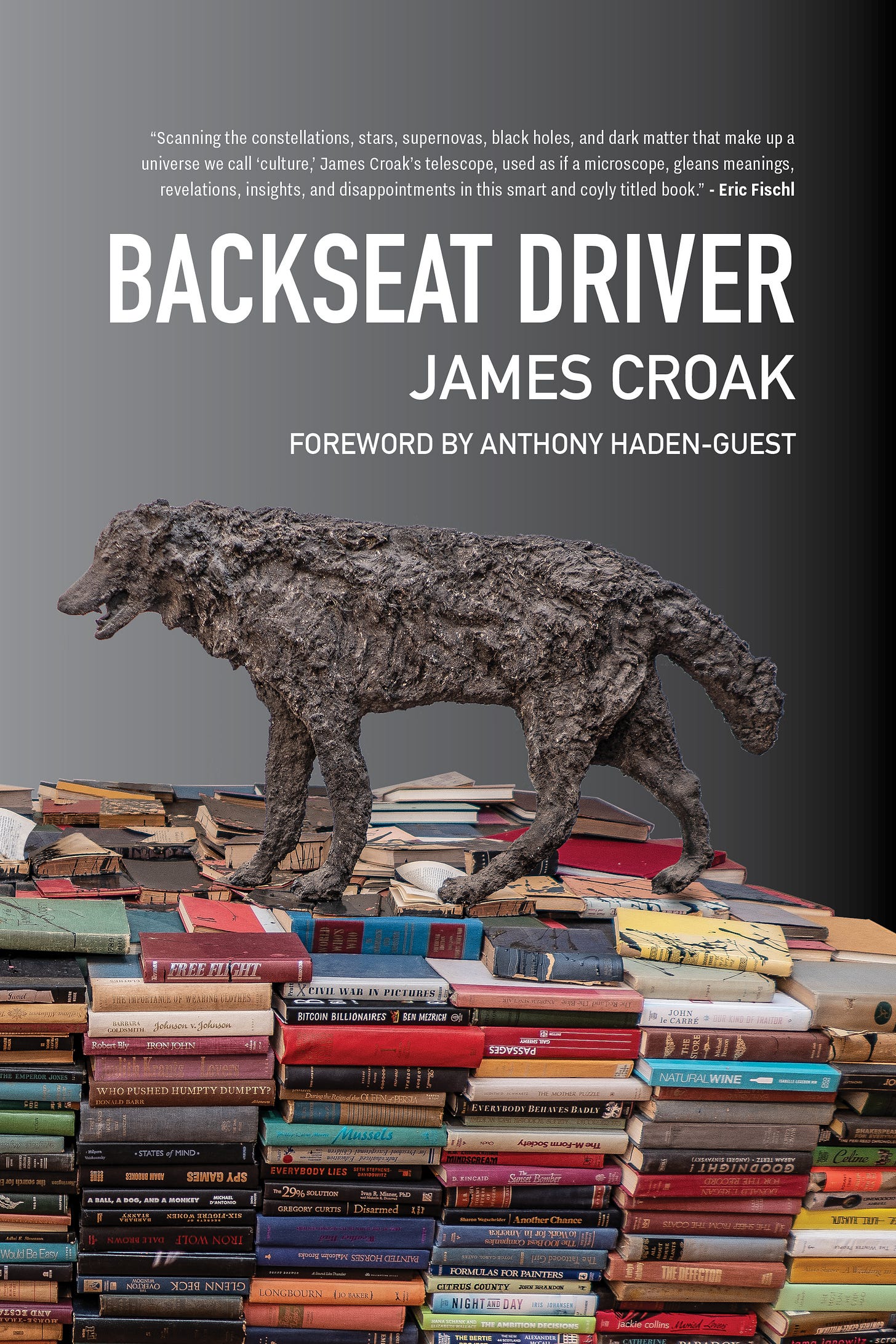Backseat Driver
The inaugural publication from Dissident Muse is a collection of writings by James Croak.
Dissident Muse is proud to announce its first publication, Backseat Driver by James Croak. From the back cover:
James Croak, an internationally exhibited artist, is also a trenchant observer of the art world. Backseat Driver collects his writings from the last two decades, including a selection of dauntless exhibition and book reviews, erudite philosophical observations, and lively, sagacious reflections on a life in the arts. “His writing is full of deliciously unexpected gobbets,” says renowned critic Anthony Haden-Guest in the foreword. Readers of Backseat Driver will discover that Croak's remarks possess all the wit and profundity of his highly regarded sculptures.
It has endorsements from Eric Fischl:
Scanning the constellations, stars, supernovas, black holes, and dark matter that make up a universe we call “culture,” James Croak's telescope, used as if a microscope, gleans meanings, revelations, insights, and disappointments in this smart and coyly titled book.
Sharp, witty commentary with an artist’s no-holds-barred insight.
For decades, James Croak has been one of the most articulate and intelligent commentators on the art world, as well as one of the most prescient contemporary artists. This anthology is both fascinating and absolutely necessary reading for anyone interested in understanding the reality of art and culture during the last 30 years.
James Croak is that rare bird, the eloquent artist, whose bon mots match the deft wit of his sculpture. The ultimate insider, he opens doors and eyes on the artists, galleries and works that his gimlet eye selects with the authority that only a terrific artist of his caliber can offer. Like Robert Motherwell, Donald Judd, or Barnett Newman, his essays on contemporary art illuminate with the accuracy of a spotlight. We should all be grateful to have him among the contemporary critical cadre.
In the great, elite tradition of artist-writers such as Robert Smithson and Peter Halley, James Croak looks under the rocks of the twenty-first century, on a planet with a death wish. Heed his apocalyptic utterances.
While most modern art and art thought is domesticated, James Croak’s work is feral. He does not inhabit the prevailing intellectual monoculture, preferring the edgy, the candid, the uncomfortably informed, ready for cancellation.
and Peter Frank:
Artists have been writing about as well as making art at least since Vasari. Relatively few, however, honor the pleasures of the text as well as of the idea. James Croak, that most idiosyncratic of sculptors, writes with uncommon lucidity and eloquence about art he sees and concepts he adduces. Best of all, when he disapproves, he actually criticizes, explanation and all. And similarly, when he enthuses.
As mentioned, the foreword was written by no less than Anthony Haden-Guest. From my editor’s note:
Croak was, and remains, an important chronicler of a recent period of art that continues, in spite of itself, even after it became impossible to describe what was happening in terms of distinct movements. This post-movement situation further threatens the record of the time. It remains possible to compare in broad strokes present art to that of the past, but not present art to the art of the present. Croak navigates it anyway, drawing on personal recollection, a broad knowledge of art history, and a serious background in philosophy that most contemporary critics only pretend to possess.
Backseat Driver is available now on Amazon.
Content at DMJ is free but paid subscriptions keep it coming. Please consider one for yourself and thank you for reading.
We are (I promise) in the midst of an Asynchronous Studio Book Club reading of Totality: Abstraction and Meaning in the Art of Barnett Newman by Michael Schreyach. Obtain your copy and jump in.
Preorders are available for Aphorisms for Artists: 100 Ways Toward Better Art by Walter Darby Bannard. More information is available at the site for the book.


